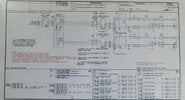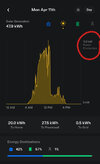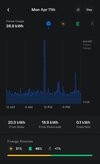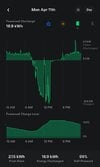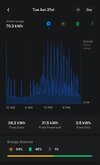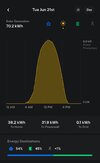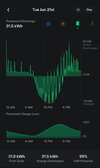its BS. Your system will self cap if PWs are full. They cannot remotely throttle your production (as far as I know)This is from an email last week. "Your solar system does not yet have permission to operate or be fully activated, the solar system will not produce the 11 KW until we receive permission to operate from the utility company."
According to that, they are throttling me and it has nothing to do with sending power back into the grid. They are saying no matter how much electricity I use, that I am artificially capped at some level of production below my max because my system is not "fully activated." And they are saying that this limitation is because I don't have permission from the utility company to produce 11 kW. Is this true or is this BS? (I'm DWP in Los Angeles for anyone wondering.)
Like I said above, my understanding was that the only limitation I have while in self-consumption mode is that I can't export electricity. I didn't think there was any limit to producing as much electricity as I can actually use.
Why don't you post some screen shots from the Tesla app so we can see your solar production curve
Edit: I se you had a couple shots in your OP. Take one with the House icon selected





